You could use two triangles on :before and :after :pseudo-elements.
div {
position: relative;
width: 100px;
height: 40px;
border: 4px solid black;
}
div:after, div:before {
content: '';
position: absolute;
width: 0;
height: 0;
bottom: -9px;
right: 20px;
border-top: 10px solid white;
border-right: 2px solid white;
border-left: 10px solid transparent;
}
div:before {
bottom: -15px;
right: 16px;
border-top: 15px solid black;
border-right: 4px solid black;
border-left: 15px solid transparent;
}
<div></div>
You could always use svg to make it even more easier.
<svg width="108" height="68" viewBox="-2 -2 108 68">
<path d="M0,0 h100 v40 h-20 v10 l-10,-10 h-70z" fill="none" stroke="black" stroke-width="3">
</svg>
You could use pattern on the stroke instead of a single color.

<svg width="108" height="68" viewBox="-2 -2 108 68">
<defs>
<pattern id="pat" patternUnits="userSpaceOnUse" width="6" height="6" viewBox="0 0 6 6">
<path d="M0,0 h3 l3,3 v3z M0,6 h3 l-3,-3z" fill="#E9D641" />
<path d="M0,0 v3 l3,3 h3z M3,0 h3 v3z" fill="#85A03C" />
</pattern>
</defs>
<path d="M0,0 h100 v40 h-20 v10 l-10,-10 h-70z" fill="none" stroke="url(#pat)" stroke-width="4" />
</svg>

